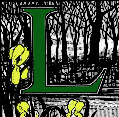 ike Ruskin and Browning, who were major influences, Hopkins employs allusions to biblical types as a means of combining a rich, aesthetic surface with elaborate symbolism. As Jerome Bump has shown, Hopkins also draws on both medieval and Tractarian conceptions of typology that extend this kind of symbolism to include nature objects, such as the sun and seasons. A poem such as "The Windhover" presents the sensuous, visible details of a really existing thing — here the hawk — and then makes us realize the elaborate Christian significance of each detail, as (like a type) the image of the bird is "completed" and makes sense only by reference to Christ.
ike Ruskin and Browning, who were major influences, Hopkins employs allusions to biblical types as a means of combining a rich, aesthetic surface with elaborate symbolism. As Jerome Bump has shown, Hopkins also draws on both medieval and Tractarian conceptions of typology that extend this kind of symbolism to include nature objects, such as the sun and seasons. A poem such as "The Windhover" presents the sensuous, visible details of a really existing thing — here the hawk — and then makes us realize the elaborate Christian significance of each detail, as (like a type) the image of the bird is "completed" and makes sense only by reference to Christ.
Whereas "Barnfloor and Winepress" and "New Readings" make explicit reference to biblical types in the same way as do poems by Tennyson, Browning, and Christina Rossetti, "The Windhover," "God's Grandeur," and other later works by Hopkins instead employ charactertically distant echoes of commonplace images. For example, the basic or generating conceit of "The Windhover" is that the higher beauty and higher victory come forth only when something — say, a hawk, an ember, or a clump of soil — is subjected to greater pressure and crushed or bruised. This conceit is in fact an extension of the standard typological interpretation of that passage in Genesis where God tells the serpent: "And I will put enmity between thee and the woman, and between thy seed and her seed; it shall bruise thy head, and thou shall bruise his heel" (3:15). According to conventional readings of this passage, Christ was the seed Who would bruise the serpent's head, and He in turn would be bruised — crucified — in thus conquering evil. James Finn Cotter has correctly pointed out that as a reader it was Hopkins's "custom to concentrate on an essential passage, gloss it exhaustively, and focus on a word or phrase that acted as a key to the whole scene or meaning of the author." The phrase, conceit, or basic structure that informs so many of his poems derives from Genesis 3:15 and can be stated in the following form: true beauty, true life, true victory can only be achieved, as Christ has shown, by being bruised and crushed. Stress, pressure, crushing, bruising, and similar terms appear as organizing ideas throughout his poetry, for here is a point at which Hopkins's basic beliefs, literary techniques, theological methods all converge.
[From George P. Landow, Victorian Types].
Last modified 2000